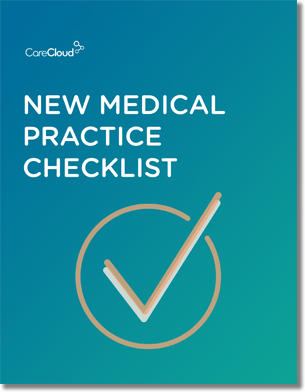Last week, my colleague, Salvador Lopez, revealed why EHRs with high usability and the ability to chart and task yield the greatest ROI. However, these aren’t the only attributes necessary when looking to get the most from your EHR investment.
In the second installment of our ROI of EHR whitepaper series, we take a look at two more characteristics inherent in the most profitable EHRs on the market.
Strong Integration with Practice Management
Timely capture of clinical encounters is critical to ensuring practices are fully and fairly paid for the care they’ve provided – of even greater importance in an environment characterized by declining reimbursements.
It is therefore vital for an EHR to integrate seamlessly with high-performing practice management (PM) solutions, closing the gap between the clinical and financial aspects of patient care. A single vendor with a history of delivering strong cash performance, high first-pass acceptance rates, and high first-pass resolution rates for claims is, therefore, a must.
Three key benefits result from tight integration. First, practices can streamline patient management from appointment scheduling to payment processing, allowing the technology to remove the administrative burden from the shoulders of physicians and staff alike.
Second, integration can help streamline the collection process. The patient comes through the door and is processed by both the EHR and the practice management system’s billing engine, making charge entry and coding seamless, minimizing under-coding, and maximizing first pass claims acceptance and resolution rates.
Finally, by selecting a single vendor who can deliver strong EHR and PM capabilities together, medical practices minimize the need for expensive third-party interfaces, resulting in a consistent experience across the practice and lowering long-term support costs.
Shift to Cloud-based Solutions
Medical practices either purchasing an EHR for the first time or replacing an existing system should consider the ROI potential of more modern cloud-based solutions compared to traditional “client/server” ones – with their required upgrades, maintenance fees, and on-site hardware storage.
In a cloud-based EHR system, a practice’s administrative, clinical, and financial information is stored on external servers, meant for web-based access from wherever a doctor has an Internet connection. There are many benefits to cloud-based solutions.
First, cloud-based EHRs are often provided through Software-as-a-Service (SaaS) contracts, allowing practices to sign up for low monthly subscription costs that provide greater transparency and consistency in their expenditures. Implementation fees are also generally lower, as there is no hardware to come and install on-site.
The financial benefits extend beyond EHR setup. Cloud-based EHRs reduce IT staffing requirements because the vendor manages maintenance and support remotely. Typically, a client-server technician could take 24-48 hours to arrive at a practice, which could cost thousands of dollars in missed encounters and regression to paper back-ups. On the other hand, cloud technicians can troubleshoot issues remotely within minutes.
Finally, cloud-based systems are typically much more secure than on-premise systems. Not only must they adhere to strict HIPAA and other encryption standards, but they ensure a practice’s data is frequently backed up on a network of redundant servers in a highly secure data center.
As a result, when compared to EHRs that live on-premise, doctors and their staff have access to patient information without the fear of theft or other security compromises within their four walls.
Given such benefits, the industry is beginning to move dramatically in the direction of the cloud. In fact, according to the 2013 Black Book Rankings survey, of practices looking to switch their EHRs within the next year, 70% said they would move from their existing client/server or SaaS/web-based EHR to a new SaaS/web-based EHR.
Stay tuned next week for the third installment of our whitepaper review series on the 3 essentials to achieving a positive ROI from your EHR.

Do you know what you need when setting up a new medical practice?



